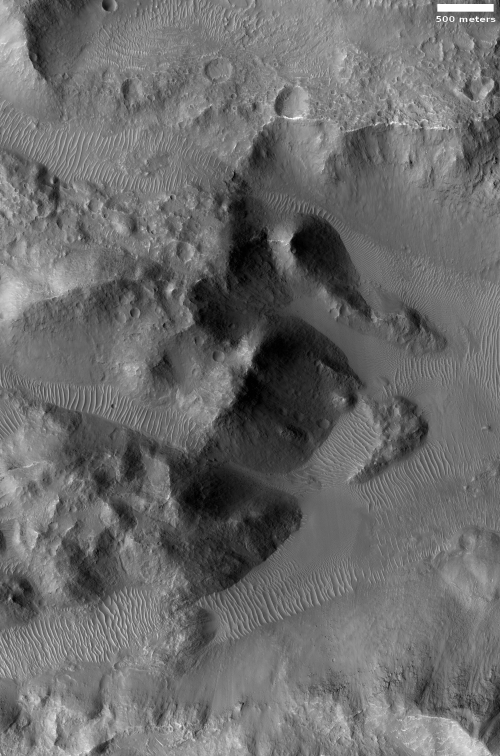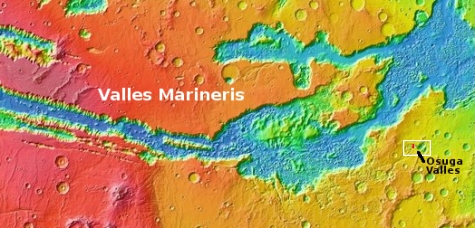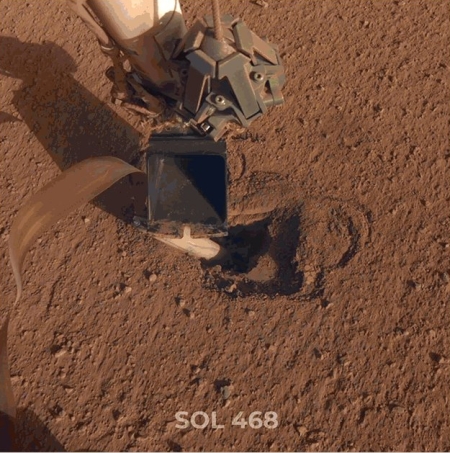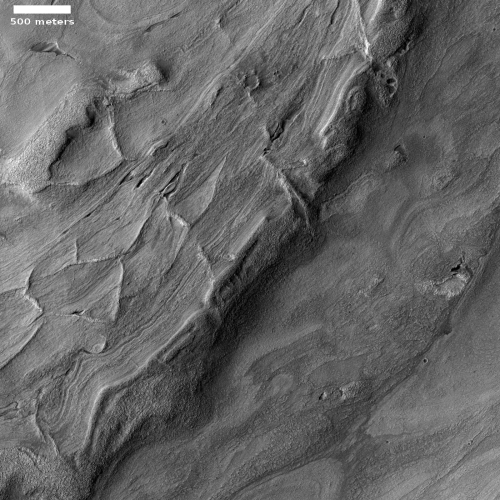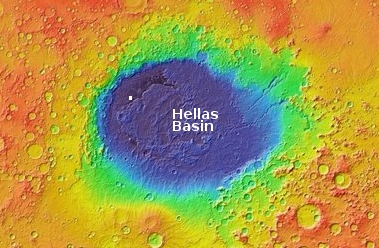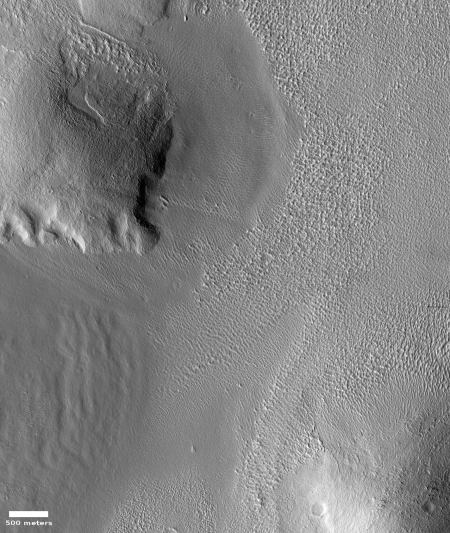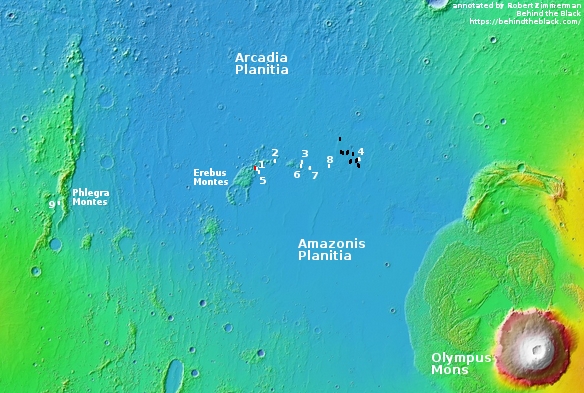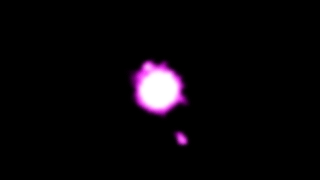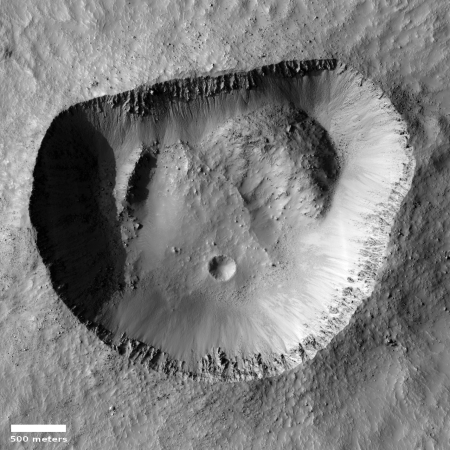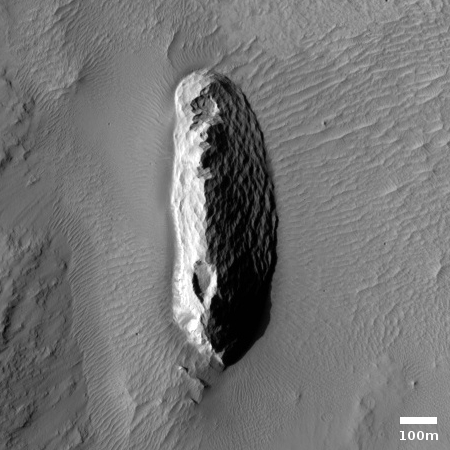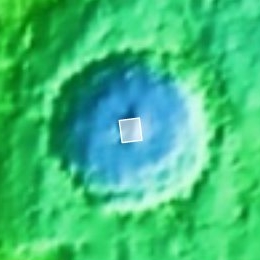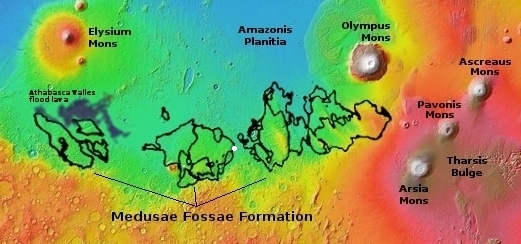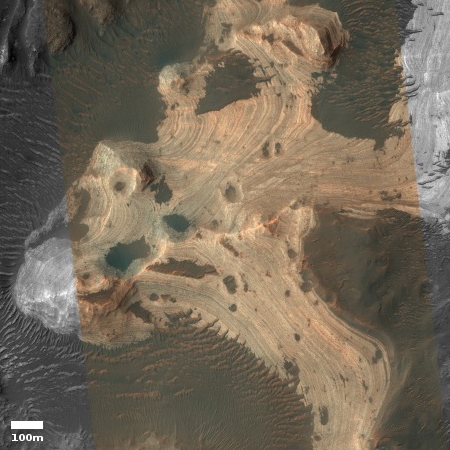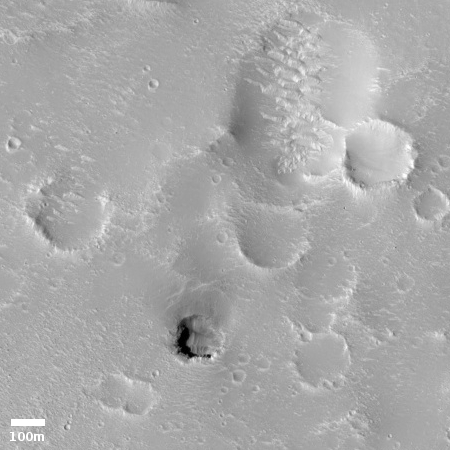Bennu’s forbidding gravelly surface
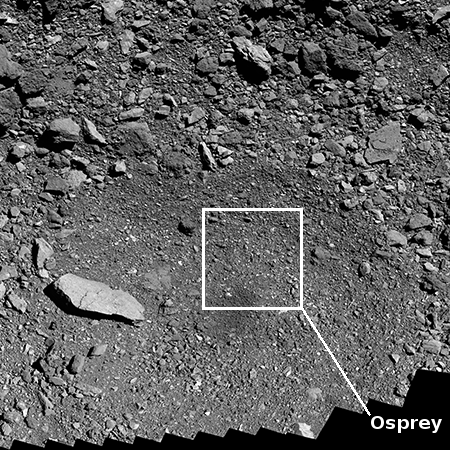
Click for a higher resolution version.
On May 26 the OSIRIS-REx science team completed their first rehearsal and close approach to their back-up sample-grab-and-go site on Bennu, dubbed Osprey, getting as close as 820 feet. The image to the right, cropped and reduced to post here, shows that sample site within the white box. According to the image caption, the “long, light-colored boulder to the left of the dark patch, named Strix Saxum, is 17 ft (5.2 m) in length.” Note also that they have rotated the image so that east is at the top in order to make it more easily viewed.
This particular spot in this crater is actually a revision from their first choice from early in 2019, which originally was to the right and below the dark patch in the center of the crater. After six months of study, they decided instead on the present target area above the dark patch, because it seemed safer with the most sampleable material.
So how safe is this new location? Let’s take a closer look.
» Read more

Click for a higher resolution version.
On May 26 the OSIRIS-REx science team completed their first rehearsal and close approach to their back-up sample-grab-and-go site on Bennu, dubbed Osprey, getting as close as 820 feet. The image to the right, cropped and reduced to post here, shows that sample site within the white box. According to the image caption, the “long, light-colored boulder to the left of the dark patch, named Strix Saxum, is 17 ft (5.2 m) in length.” Note also that they have rotated the image so that east is at the top in order to make it more easily viewed.
This particular spot in this crater is actually a revision from their first choice from early in 2019, which originally was to the right and below the dark patch in the center of the crater. After six months of study, they decided instead on the present target area above the dark patch, because it seemed safer with the most sampleable material.
So how safe is this new location? Let’s take a closer look.
» Read more

